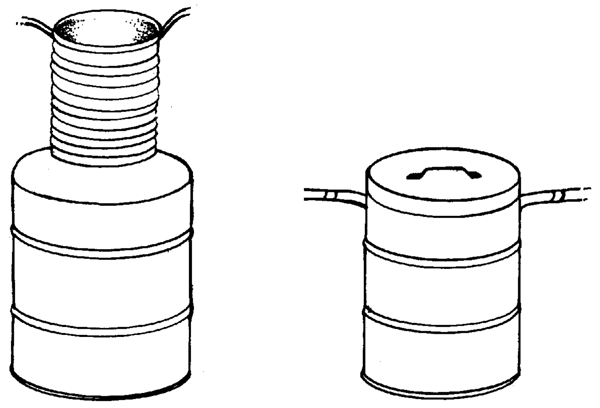Harnessing Well Water For A Free, Low-Tech Refrigeration Source
Many homesteaders and other people that choose to set up households in remote areas quickly realize that transmitted electricity is a premium resource, if not completely unavailable in some particularly remote areas. Even in reasonably developed areas, on larger properties paying for “last mile” utilities may be prohibitively expensive. Some turn to ingenious but expensive kerosene or propane powered models for appliances such as refrigerators when they may have an inexpensive, low-tech refrigerating system right beneath their feet. For the same reason utilities are hard to come by, many locations also rely on a private well and that’s where our solution starts.
The resource of cold, subterranean water has been used by man for many centuries. From the wind & evaporation cooling of the Windcatcher architecture of the Middle East to the “well houses” of American pioneers. Even the humble African termite has mastered this process!
Even when electricity is readily available, the process is so cheap and easy, there is no reason not to take advantage of the free cooling and have options during outages or hardship.
Assessing Your Well Water
The only real requirement is a deep well water supply, with a steady water temperature between 35° and 50° F. In most of the country, deep wells have become a necessity for those outside the public water supply lines, due to lowering water tables, ground water pollution in shallow wells, and similar circumstances.
Check your water temperature by allowing the water to run for several minutes, emptying the lines and tank. Then fill a bucket with fresh water and insert a thermometer. If your water temperature is above 50°, you are probably one of the people who should look into a kerosene or LP gas refrigerator, or stick with electric.
The Principle of Well Water Cooling
Really, the whole idea is extremely simple. At the point where the water supply enters your dwelling, the incoming cold water is routed through a coil of pipe or hose installed inside an insulated box before it goes anywhere else. Whenever water is used for dish washing, laundry, showering, flushing the toilet or whatever, fresh cold water circulates through this coil and cools the interior of the insulated box. You want your well water refrigerator position as close to this entry point as possible, to minimize that amount of heat the water will pick up as it emerges from the ground supply.
Construction of a Well Water Refrigerator
Any sort of well-insulated box will serve. Depending on your tastes, abilities, and what is available, you might opt for anything from an ultra-fancy oak and brass ice-box replica to something rigged together from plywood and sheet metal scraps.
However, one elegant solution is to use a non-functional, discarded chest freezer. They are numerous in dumps, well insulated and already crafted to fit in with the décor of a traditional home. Additionally, you may be able to salvage some of the parts for other projects; all the while keeping one more (large) piece of refuse from filling up a landfill!

Using a conduit bender, form ½” soft copper tubing to match the interior dimensions of the compartment. Hard copper and sweat-on fittings—or even plastic pipe—would probably work just as well, but soft copper tubing is readily available at most home improvement stores and easiest to work with for beginners.
After putting the unit in place, hook it into the water line, and checking for leaks. The initial dropping of temperature can take a long time but once its established it will can remain stable indefinitely if you are diligent about only opening the unit to add or remove materials. If you have a lot of dead space inside your well water refrigerator, consider adding jugs of cold well water to fill the void. This will add more stable thermal mass and help keep the unit cold (water is better than air at this).
Cold water refrigeration is not adaptable to each and every situation. If, however, you are already drawing your water supply from a deep well with a fairly constant water temperature, why would you want to keep throwing your hard earned money away for electricity, kerosene, or any other fuel when you can refrigerate for free?
Additional Research:
  |
0830621369
Leave a Reply